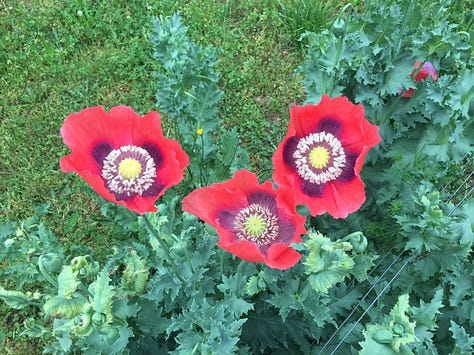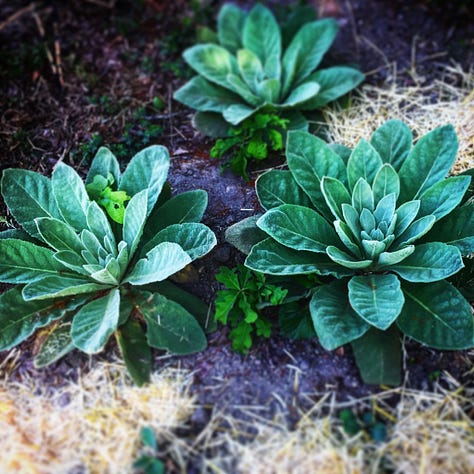It’s another loud summer in the country and I am happy. I’m happy because I was epically wrong about what living in the country would be like. See, I’d always loved and feared the idea. The love? Duh. What’s not to love about privacy and views and the chance to garden without any HOA to tell you nay? As for the fear… Well, there was a list, but I guess I imagined … a silence in Nature—a silence that might be refreshing at first, a break from city hustle, but that would end up stunning and daunting the heart…
[Kind of like Wide Sargasso Sea, and you know how that ended? In arson and murder.]
Well, thankfully, I had it all wrong. It’s not the silence that stuns you in the country—
It’s. The. Noise.
OK, so you guys endured cicada-pocalypse with me, but it’s been like that from the beginning. I remember the first time I stepped out onto my front porch having moved eight hours south to six acres in rural South Carolina with the ambition of building a house on my grandparents’ land and farming, in a small, sustainable way, with the help of my heart’s own love.



That’s a story for another day—but this day, it was morning—not the first after our arrival, but certainly the first after I’d had a good night’s sleep. And though we had arrived at the height of midsummer, I was surprised to find the mornings still cool. So I sat there, happily rocking like my mawmaw in my very own rocking chair, journal in lap, ready to bask in a few moments of peace and stillness after the haste and hurry of the move— only to realize … I could not.
Because the day was anything but still.
My little house was ringed by mighty oaks and one very pretty maple—a real contrast to my former virtually treeless existence. And the tumult in those trees was like the shattering of plates in a thousand different pitches. It fair pinned your ears back. LOL.

No mockingbird’s call, no matter how faint or far away, went without a dozen responses—multiplied by the jays, the wrens, the meadowlarks, the robins, the crows, and more. The insects were at it, too, the crickets, grasshoppers, and cicadas, the bees and yellowjackets I saw foraging amid the wildflowers. Every creeping peeping buzzing whistling whirring whining thing that crept, crawled, or flew keeping up a clamor that mingled with the lowing of cows, the conversations of geese and goats, the braying and whinnying of the neighbors’ donkeys and ponies and—Jesus, was that a peacock?!
And over and above it all sounded the deep moan of a steady east wind blowing in from the ocean: this whole symphony of sound beating its resonance into the pulse of my blood in my ears, my heart… and it’s been like this, a ceaseless and unending song, for a decade.
I learned about the “call and response” in African and African Diaspora musical expression when just a girl. I am the daughter of a music teacher and jazz musician, so some things came early and got reinforced often. For those who don’t know, it’s a pervasive pattern—a participatory ethos in which the leader calls and the community responds in a set pattern that is nonetheless infinitely variable. The ethos is not limited to art, though. One sees everywhere, in public gatherings, in civic and private affairs, religious rituals, as well as and especially in sung and instrumental musical expression.
Generations of artists and scholars have written of or from, drawn inspiration and healing from, this tradition that was one of the few things our enslaved forebears could bring with them on those slave ships. It’s a “changing same,” to quote the poet Leroi Jones/Amiri Baraka, which has been adapted and transmitted over four centuries into sanctified religion; children's games and sports; and, most notably, in the myriad forms of our spoken expression and our music: our jokes and our “toasts,” our “signifying” spirituals and gospel, our jazz and blues, rhythm and blues, rock and roll, R.A.P. and hip hop. Oh, gosh, that was probably way more than you were ready for.
But anyway, the point is, I learned these things in school. It was Nature herself, however, who taught me [through my visceral, bodily response] to think of her call and response as the Great Call and Response. The source of the call and response tradition in which I’d been educated. After all, this sense of interconnection at the molecular level is not a flight of fancy but a quantum reality, and so is the desire to interpret and make meaning of our sense impressions of that connection. I mean if it’s painted on cave walls and encoded in DNA over 250,000 years, it couldn’t be wiped away in a mere 500…
Or could it? …
We certainly seem to be going mad…
Anyway, plenty of time for those thoughts. Let’s look at some pictures from our first attempt at a potager garden in the wilds of South Carolina …









